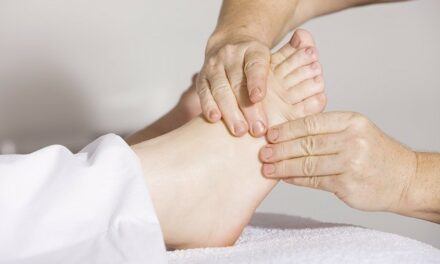What is Diabetes Nerve Pain?
Diabetic leg pain is the ‘chronic‘ ache of the leg caused by the damages to the nervous system of our body from diabetes mellitus.
The condition is called peripheral diabetic neuropathy.
What is Diabetes Neuropathy?
The blood vessels and nerves are the closely associated systems in the body. Diabetes acts upon the small blood vessels that provide nutrition to the nerves causing ‘microvascular effects’ and lead to ‘macrovascular issues’, thus depriving the nervous system of its blood circulation progressing further into nervous dysfunction, a foremost step of the condition called ‘peripheral neuropathy’.
The increased glycols also a factor of peripheral neuropathy. The most affected region of the brain is the nervous system which has sensory nerves that receive the neural signals; the motor region sends impulses away from the central nervous system to the functional organs. The autonomic nervous system critically controls the functions.
Depending on the nerves it damaged the functioning, control, and sensation of that organ is impaired.
The neuropathy can be biased as cranial, autonomic, sensorimotor neuropathy based on the location of the attack.
Risk Factors for Peripheral Neuropathy
The peripheral diabetic neuropathy commonly affected patients are not capable of self-care, and the people around need to pay an eagle eye on their motion, signs and the food. The struggles can be compared with little changes in their lifestyle and healthy diet practices and strong efforts without stepping back.
Diabetic Leg Pain Symptoms
The diabetic neuropathy showcases a range of signs, which we may probably unnoticed until the later stages and worsen symptoms. A few of them can be listed as:
- Sudden (or ‘acute’) and undetermined pain in the limbs, it can be specified even by a location or a reason.
- The body balance is lost, standing and control over the voluntary movements are staggered, the nerves lose the coordination, so you may struggle to stand, sit or carry a movement without support from someone or using a walking aid.
- Signs increased sensitivity (or ‘hypersensitivity’) in your legs to the touch; the patients cannot even sustain a touch by hand from others.
- Numbness or no sensation is the sizzling symptom of the neuropathy, the patient may not feel anything in limbs or may not react with natural reflexes for any external force applied.
- Foot drop and a loss in ankle jerk, and no stable reactions to the vibrations.
- Posture imbalance and helpless falls make them fearful of moving, and they pull back themselves in a panic.
- Burning sensations arise from feet, and they even sleep with no covers on their feet due to the heat caused in the limbs
- Tingling or needle pinning effects greatly shows off, in both limbs. The untold and punching ache always sticks to the patient making him impatient and sore.
- The muscles in the legs and hands face issues such as
a) The paralytic effect
b) The tissues in the muscles get wasted
c) The muscle weight is lost; the diabetic leg is more easily identified by the changes in the form of the legs.
d) Regular cramps and soreness in the leg muscle.
- The never-ending cuts and wounds due to diabetes with a slow healing process.
‘Diabetic foot’ which is a combination of the above symptoms is a well-known sign for diabetic neuropathy.
Body Symptoms Associated With Diabetic Foot
- Sweat is heavy or else absent and the skin dryness, sores, ulcers, sarcoidosis.
- Dizziness and profuse sweating are common issues with patients with diabetic neuropathy
- Your anxiety levels could increase for no reason, and some even show up with signs of mental illnesses (e.g. depression).
- Sleep habits in the patients are disrupted creating, either insomnia lots of sleep are seen.
- Heavy sleep is not at all suggested as it causes an increase in weight, which cascades obesity and triggers the severe diabetes effects on the body.
- Fluctuating blood pressure levels, which makes the patient sick from time to time.
- The urinary tract infections, urine retention for the more extended periods are seen, with no control over the urinary functions.
- Dryness of vagina in women, the erectile dysfunctions in males and the issues in achieving orgasms.
- Coordination of the body organs by the nervous system is lost gradually.
- Bowel movements cannot be controlled and cause diarrhea and other gastrointestinal and digestive disorders.
Causes of Diabetic Foot Pain
Though the exact reason for the emergence of the diabetic neuropathy is not known, an array of causes can be told and believed to be associated with the disease.
- As previously noted, diabetes mellitus takes charge over the nervous system and introduces the chronic peripheral neuropathy into the body. (Learn more about the difference between diabetes mellitus from diabetes insipidus here)
- High doses of medications for diabetes leg pain results in the neuropathy. For example, regular usage of aspirin, ibuprofen, duloxetine, acetaminophen, opioid drugs though may regulate the pain short-term but aggregate the disease.
- The influence of the external and environmental toxins.
- The chemotherapy treatment used in the management of cancers plans and the post effects of the therapy stirs up the disease.
- HIV medications
- B12 vitamin or the folate deficiency caused by the diabetes medication may cause the neuropathy.
- Genetically, heredity or family tracking can also give away to the disease.
- Lupus and other autoimmune diseases are a reason too.
- Celiac disease, rheumatoid arthritis also serve the cause.
Diabetes Foot Pain Treatment
The diabetic neuropathy has no cure by far, but it has a wide range of medications and treatments to control it well.
If not managed well, the nervous end blocks, the narrowed blood vessels, the numbness of the limbs, the sore and unyielding ulcers, body balance issues, psychological disorders, hypersensitivity to the environment, etc. are the manifestations of the disease.
Let us have a look at what are the home remedies can help to manage the diabetic leg.
Diabetes Leg Pain Home Remedies
Though medication and treatments are on the high end, a little management and control by our hands subdue the aggression of the disease, most of which are easy to follow and self-capable.
Let’s have a look at them.
Walk, and keep moving
Walking is recommended to the diabetics, as a measure to take down the glycemic index and shred some weight that is high and to maintain fitness.
The walking in the patients with the sore ulcers, diabetic foot amputated wounds, and staggering walks need more attention and support and also demands a high pressure on the foot than the normal situations.
Though walking with little precautions helps. Prescribed soles and cushions are needed for the feet.
Regular exercise
A regular exercise yet light, and non-impactful activities keep the fitness and prevent the worsening of the situation.
Did you know the best exercise for people with diabetes? Just read the link for more.
Warm baths
It is known the fact that diabetic neuropathy causes the numbness or lack of sensation, and it also causes the intolerance to both hot and cold conditions. However, doctors suggest a warm hot water bath, which is not way too sensitive to satisfy the numbness. It may instantly relieve the pain.
Acupuncture
The neuropathy has numbness, tingling in the foot and hands, pinning or needling sensations and burning of the soles as the chief complaints. The acupuncture is a medical area where it uses the needles at certain areas of pain and reported to be effective in relieving the problem.
Alpha Lipoid Acid
The conduction by the nerves is affected by the core including motor and sensory nerves in the neuropathy patients. The alpha acid though not officially prescribed is an antioxidant, lowers the diabetes mellitus substantially, increase the velocity of nerve conduction, and its efficiency is clinically proved on patients. Pain and numbness in the limbs may be reduced as a result.
A Disciplined Diet
People with diabetics are usually prescribed and have a nutritionist or dietitian made a diet plan for themselves.
The reason for the diet the plan is to:
- Cut down the increasing blood sugar levels.
- Avoid the processed, canned and tinned foods.
- Say not the carbohydrate-rich foods.
- High fiber-rich foods are to be taken as stipulated.
- Eating fried or Chinese or spiced foods should be avoided.
- Omega 3 fatty acid rich fish, seafood like salmon and tuna are to be included in the regular diet.
- Drinks lots of water, it affects nothing Herbal teas and water and vegetable juices are to be taken over the sweetened juices, soda, and energy drinks.
- Eat lean fats and lean protein avoiding the red meat and high proteins.
- See that no added sugars enter your diet in a run for artificial sweeteners.
- Essential oils extracted and seeds, nuts can be part of the diet.
More details are in the Diabetes Food List.
Manage Stress
Everyone has their sufferings to endure. Neuropathy is not curable, but it can be managed well. Everyone harsh the situations leave an increasing effect on the already affected nerves of the brain.
Keep away from the stress causing thoughts, and battle with an honest effort.
Foot and Skin Care
Some tips on how to care for your skin and foot are below.
- Check the foot regularly for any cuts, sores, redness or numbness.
- Get a regular wash and massage for your limbs, keep the feel fresh and rejuvenated.
- Have the limb exercise routine to bombard the fitness issues.
- Enhance your blood circulation by a walk or warm soak.
- Pick a correct fit of a shoe with a great sole and cushioning effect as prescribed by the doctor; the negligence in the choice pays a high price later. A comfortable pair of socks are needed to wear after cleaning up your feet.
- Trim off your toenails in a regular regime.
Remember, walking without footwear or a barefoot walk not only brings in toenails and germs around but makes the feet sore and prone to infections.
Your skin is the immediate index of your diabetes. Skin allergic conditions, skin diseases are never fast to be diagnosed in some diabetic patients. They, when neglected, may soon end in dreadful neuropathic symptoms and complications.
Vitamin B12
The diabetes mellitus treatment by metformin causes B12 deficiency. The scanty amounts of vitamin B12 is a cause for diabetic neuropathy.
B vitamins have a dominant role in nerve health. If the deficiency is ignored, it may have a permanent effect on your nerves.
Foods rich in B12 are fish, eggs, broccoli, dairy products, vegetables, and cereals to note some examples.
Vitamin B6
The vitamin B6 deficiency is a root cause for the attack of peripheral neuropathy as stated by many researchers. The pyridoxine deficient patients are prone to it easily. Usually, diabetes treatments damage the B6 levels in the body.
Vegetables, potatoes, poultry, fish are to be taken to have a substitute.
Vitamin C
When vitamin C is taken along with the insulin, it can help to minimize the blood vessel damage which is caused by diabetes.
Citrus family, legumes can help with sourcing vitamin C.
No Smoke and No Drink
Staying away from smoking and drinking alcohol is the best way to prevent the aggression of the neuropathy. If you smoke that is the vastly causative factor for the disease.
Chiropractic Massage
The chiropractors give an intense massage to foot and the hands, relieving the compressed nerves in them. The chiropractic massages are proven to be effective to spine even.
Less pressure application with great relaxation can be seen.
Evening Primrose
Evening prime rose supplements or a combination with fish oil can be taken, as it reduces the nerve sufferings and improves the symptoms of the peripheral diabetic neuropathy.
There is a wide range of applications in forms of creams and liquids.
Cinnamon
Cinnamon supplements insulin levels, reducing the blood sugar levels, keep a check on diabetes and its processing disorders.
Hot cayenne pepper, castor oil, mustard oil, Brahmin oil, caffeine, aloe vera, American ginseng, capsaicin cream, etc., are the remedies enlisted to treat and manage the peripheral diabetic neuropathy.
Other Diabetes Foot Pain Relief Treatments
Other treatments for the peripheral neuropathy are:
- The medications for diabetic neuropathy have a good range with the insulin drug to stake over the glucose levels, nerve pain killers which releases the pain caused by the nerve endings, analgesics like ibuprofen and aspirin, etc., narcotic or opioids like tramadol and tapentadol.
Remember, they may result and addiction and on regular high dosage may encourage diabetic leg syndrome.
- Anesthetic drugs are too numb the painful nerve blocks. Anti-seizure medications like pregabalin and carbamazepine are the most suggested, antidepressants lower the depression which is imipramine.
- The associated issues like sexual dysfunction, urinary tract disorders, digestion problems, immunity disorders are to be treated simultaneously.
- Yoga and regular health checkups are to be a part of the treatment plan too.
After all, most of the important step in the treatment is to control the blood sugar levels, through diet, fitness and medication.
There may exist any advancement in the diseases and the treatments to stop them in this changing and educating world, but being aware of the disease and its diagnosis, prevention, causes, symptoms will always be a help. Diabetes is a stiff-necked disease which brings on several associated diseases. So being alarmed of the progressions and taking precautions really keeps away from chronic suffering and of course the symptoms of the diabetic leg.






